Photos for OS X first look: The future of ubiquitous photography approaches
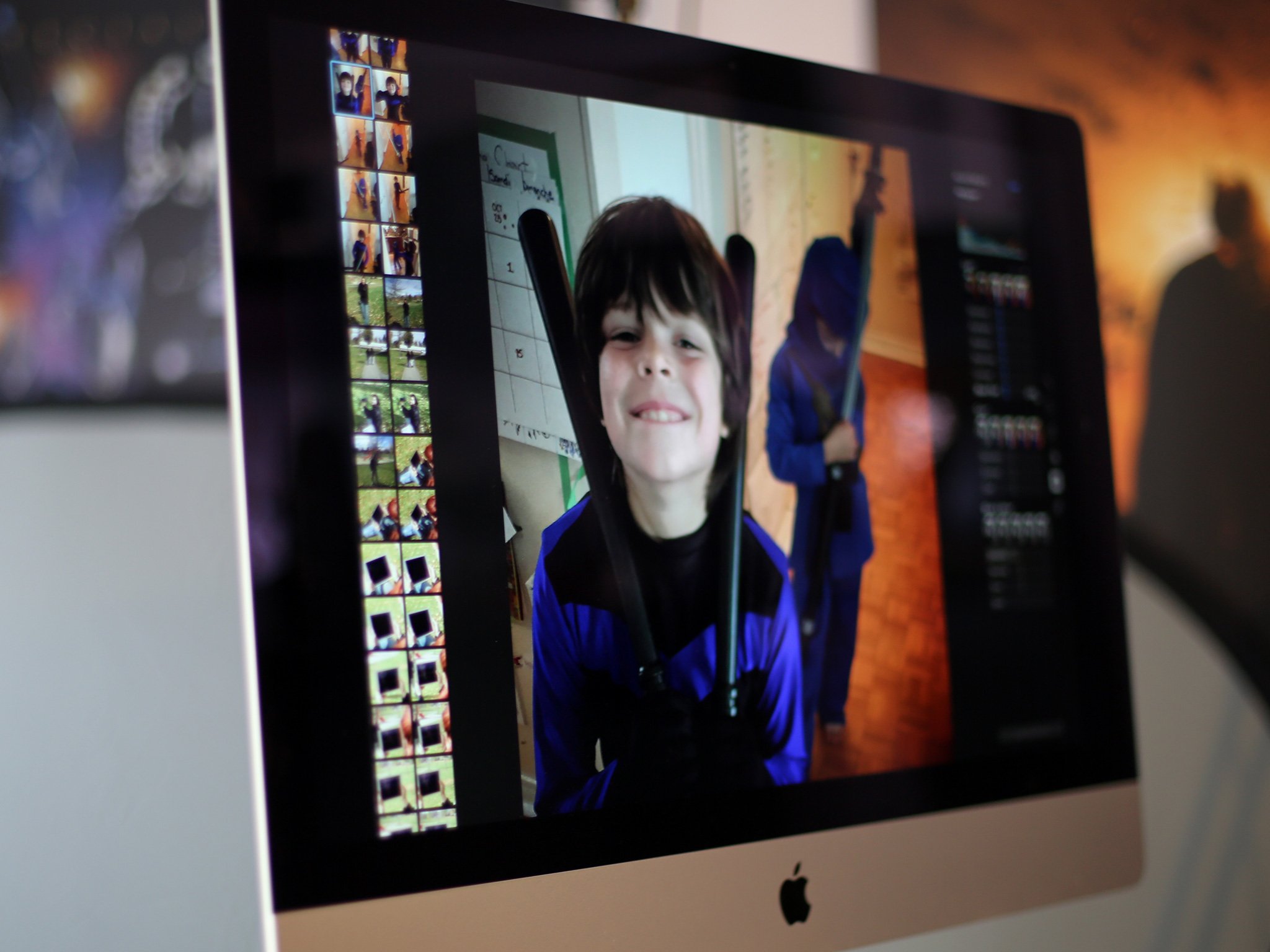
At WWDC 2014, Apple showed off not just a new Photos for Mac app, but an entirely new approach to photo and video management. Combined with Photos for iOS 8 and iCloud Photo Library, it promised to store all your visual assets safely up on Apple's servers and make them available across all your devices — iPhone, iPad, Mac, and Apple TV — and via iCloud.com on the web. It also promised both speed, storing your most frequently accessed photos and videos locally and in full fidelity, and storage efficiency, leaving your less frequently accessed photos and videos on the cloud, a tap or click away.
More importantly, Apple promised all of this as a part of something greater — photos and videos as core components of the company's operating systems.
Now, some seven months later, Apple has seeded the first Photos for Mac beta to developers and testers. There will be a public beta at some point, and a full release this spring, so this is really just the tip of the Photos iceberg. But in the meantime, we've got an FAQ written by iMore's Serenity Caldwell to tide you over along with some of my first impressions, and an answer to the question we've been asking most — in a post-iPhoto, post-Aperture world, how well will modern Mac owners be served by the Photos app?
Yosemite born
Let's just get this out of the way: Photos for Mac is gorgeous. It's an OS X Yosemite app through and through, with all the translucency and vibrancy that implies. At its most minimal, it gives you just the new, streamlined toolbar with options to step through to navigation, scale thumbnails; tab through Photos, Shared, Albums, and Projects views; add new albums, smart albums, calendars, cards, slideshows, and prints; share with popular services; and search.
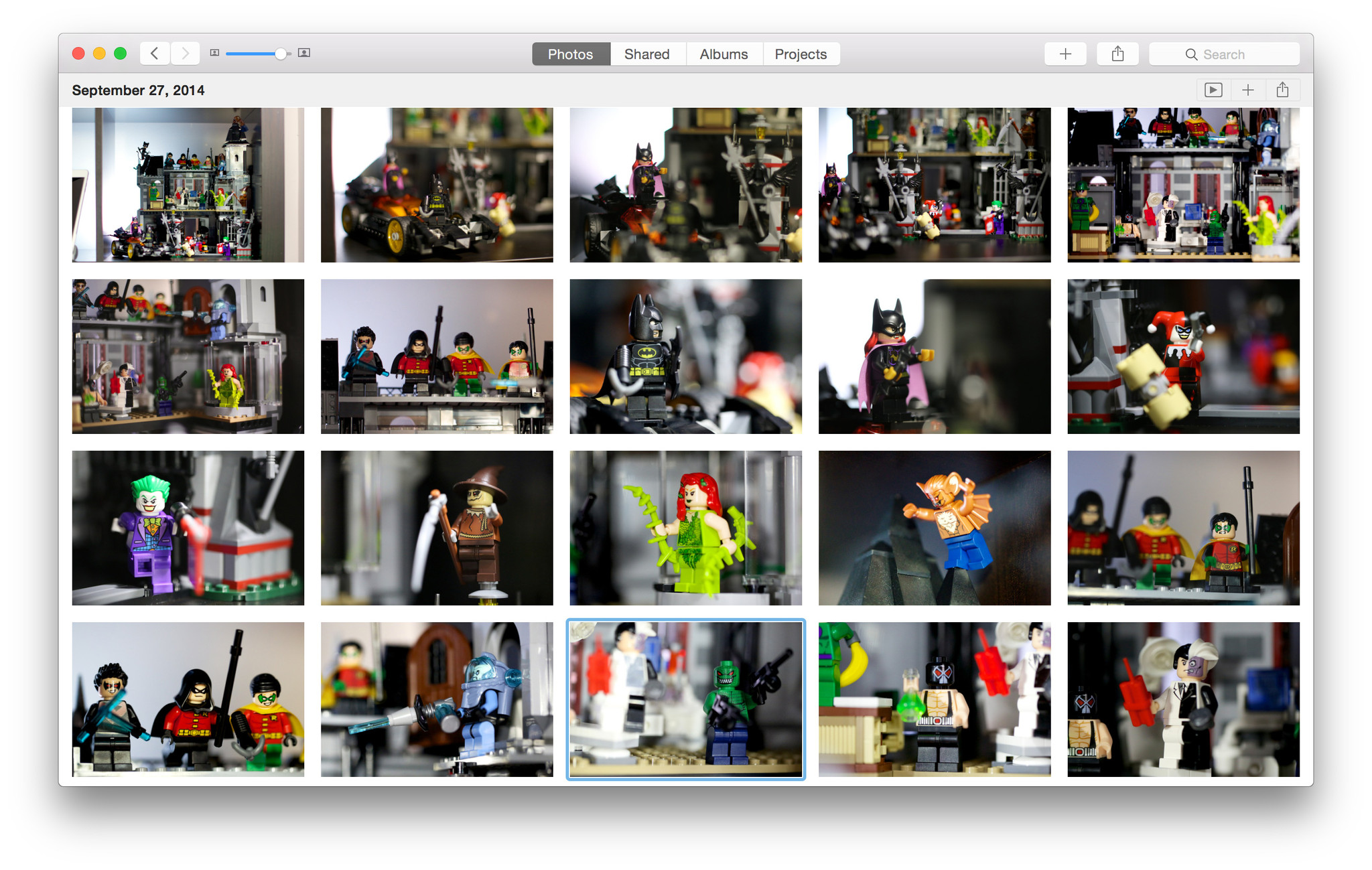
You can open the sidebar, if you like, for easy access to shared folders, personal albums, and projects. You can also open the split view so you can work on one photo but still see related thumbnails beside it. And in the toolbar, you'll find the info pane, keyword manager, and more. None of it clutters up the interface the first time you launch it, but it's all available to you at any time.
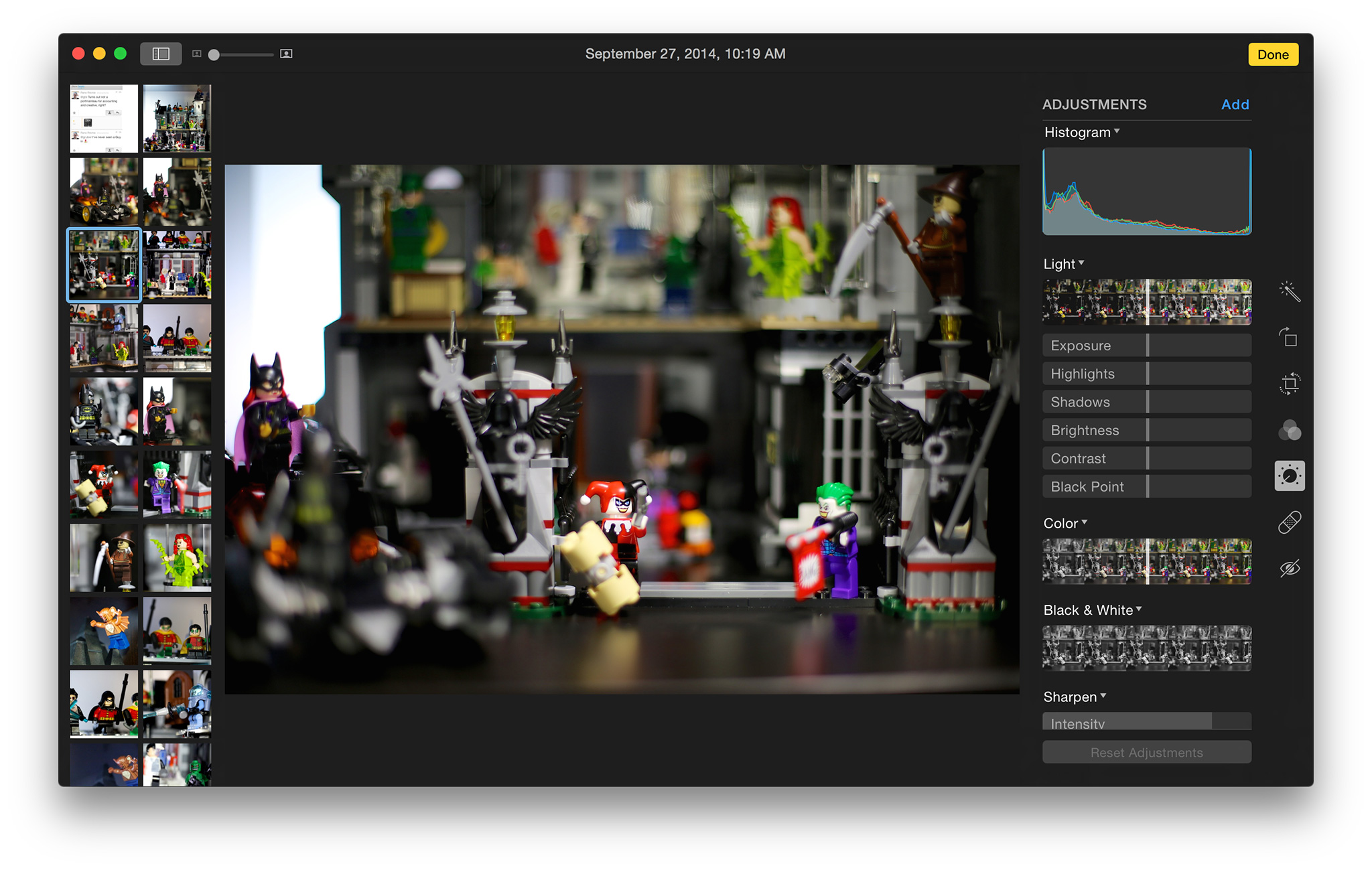
Making an app accessible to everyone is an almost-impossible task. If it's simple enough for new users, it might not be useful enough to professionals. If it's powerful enough for pros, it might be impenetrable to beginners.
Apple is solving that problem through depth: The designers put the simplest controls on top where everyone can find them, and layered more sophisticated controls beneath them, where the more adept will seek them out. And it works exceptionally well. It lets the app's interface scale from the incredibly simple to the remarkably powerful.
Master your iPhone in minutes
iMore offers spot-on advice and guidance from our team of experts, with decades of Apple device experience to lean on. Learn more with iMore!
With Photos, Apple's made one that will legitimately serve the needs of most people, from beginner to serious enthusiast.
From iPhoto and Aperture
Apple has been straightforward about the future of the iPhoto and Aperture apps — there isn't one. Both remain compatible with OS X Yosemite, which means you'll be able to keep using them for as long as you're using Yosemite, maybe longer, but neither will be receiving updates. They can't. They're not of the post-iPhone, post-iCloud world. They need to be rebooted, and Photos is that reboot.
For most people, the transition will be transparent. Photos will launch and open your existing iPhoto or Aperture library, and all your stuff will copy over. Flags, color labels, and stars don't exist in Photos, but Photos will create keywords for them. Events from iPhoto and Stacks and Projects from Aperture will put into albums. Photos won't get everything, like Aperture's custom fields, but Apple's made sure it gets as much as can fit in its model.
Because the Photos app references the same master image files, you won't need extra disk space to copy over your library. That's great news for people with gigs and gobs of photos and videos.
Yes, that also means you can go back and open iPhoto or Aperture and your photos will still be there as well. They're not in sync, however, so if you add or edit files in Photos, those additions and edits won't be reflected in iPhoto or Aperture, and vice versa. And if you want to say goodbye to your old library, you can trash it with no effect on your new one.
If, for some reason, you have multiple libraries — iPhoto for your iPhone, and Aperture for your DSLR, for example — you'll be asked to choose which library you want to use for Photos. If you want to merge the libraries, do it in Aperture first, then open Photos and bring the combined Aperture library in.
You can open and maintain multiple libraries in Photos just like you could in iPhotos and Aperture, so more complex setups remain possible.
Fast and findable
Photos is lightning fast. When it scrolls, it scrolls. Longtime iPhoto and Aperture users will appreciate just how fast and smooth it is. It reminds me of the first time I used Safari on the iPhone: rather than render as I went and make me wait, Safari kept up with me and rendered when I paused. When you get that close to real-time, the illusion of direct manipulation locks in, and everything just feels right. Photos just feels right.
My library isn't especially large, but Apple claims they've built Photos to handle large libraries with ease. I look forward to testing that.
The views — years, collections, and moments — will be immediately familiar to anyone who's been using Photos for iOS. Years shows just what the name implies — 2015, 2014, 2013, and so on back to the oldest year indicated in the metadata of the oldest photo. Collections are large groupings of photos and videos broken up by significant changes of time or place — a few days or a week, or a major change in location (like that trip to Aruba). Moments are smaller groupings: a day, or trip to the park.
Years lets you easily soar out to take view across time, while collections and moments let you drill down and find specific sets or items. You can gesture between photos and videos, as you'd expect, or use the keyboard just like iPhoto.
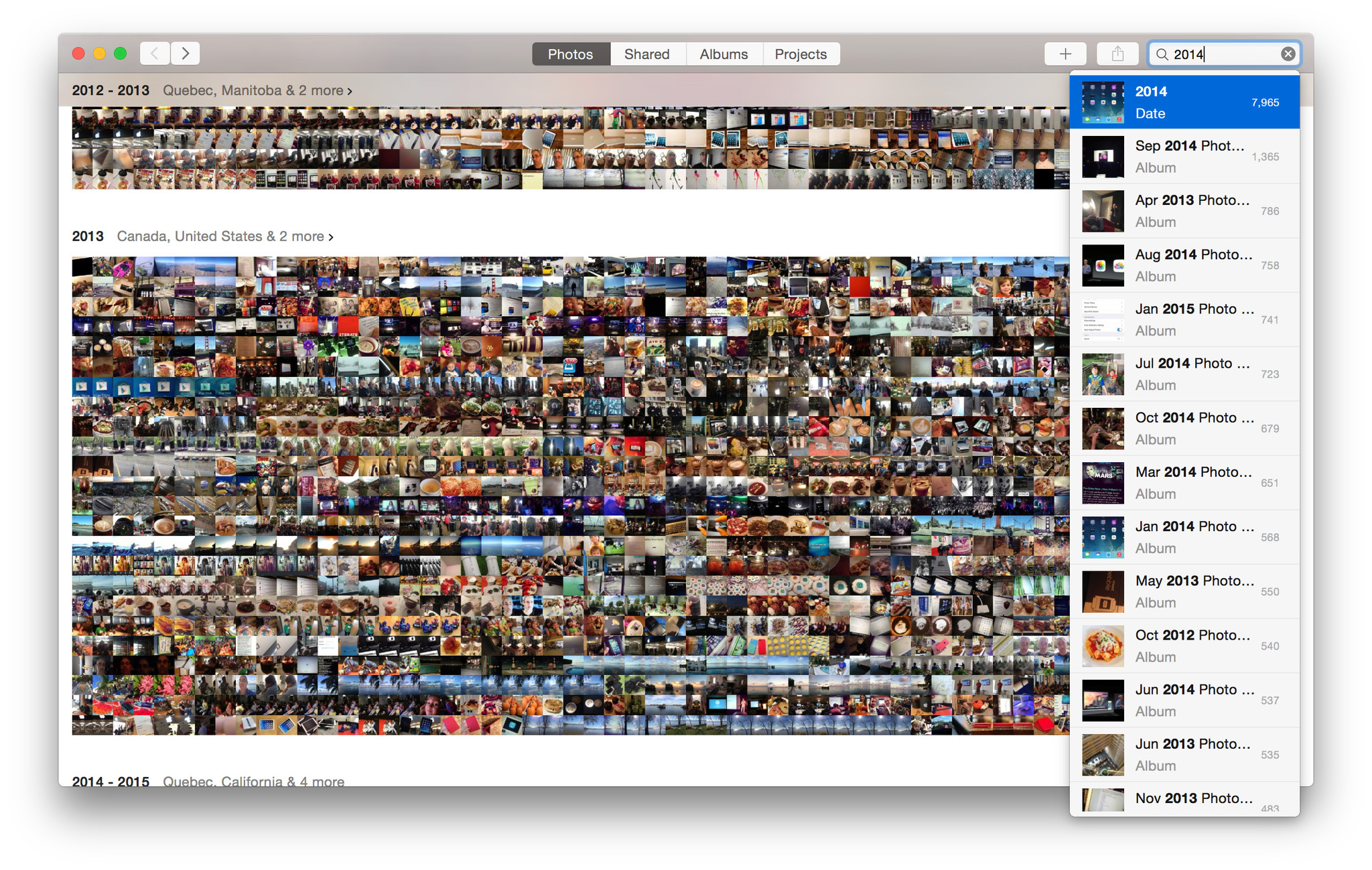
You can create folders, and Smart Albums are supported, so you can automatically have images included based on their matching (or not matching) one or more criteria. For example, all photos that match a keyword, or all photos taken at a certain aperture, or all sorts of different filtering combinations are possible.
Faces, which identifies people in your photos, also remains and is accessible via the albums view. What's more, search has been amped up to work like it does on iOS 8, but with even more query types including date, location, title, caption, album, filename, face, keyword, and more.
If you've never organized your library, all of this help make Photos more manageable. If you've carefully organized your library, it helps make Photos fly.
Editing depth
There's no video editing offered in Photos, but that's what iMovie is for. There's also no support for external editors — at least not yet. (Third-party developers will be able to hook into the Share menu, which might allow images to exit Photos, but may not allow them to return without reimporting.) There's plenty of photo editing to be found, though, and like with the interface, Apple has used depth to allow the tools to be both simple and powerful.
If all you want is a quick fix, the magic wand tool is still there. If all you know is you want a picture to be lighter or darker, more or less colorful, or some kind of black and white, the main adjustment sliders will let you eyeball just that. If you want to precisely control exposure or shadow, saturation or contrast, intensity or grain, you can do that too. If you want to add a white balance or noise reduction, or levels, they can all be turned on.
It's not just adjustments either. You can automatically align against the horizon, apply filters, retouch, and remove red eye. It's not everything Aperture provided — no brushes, for example — but it's both far more and far better than iPhoto.
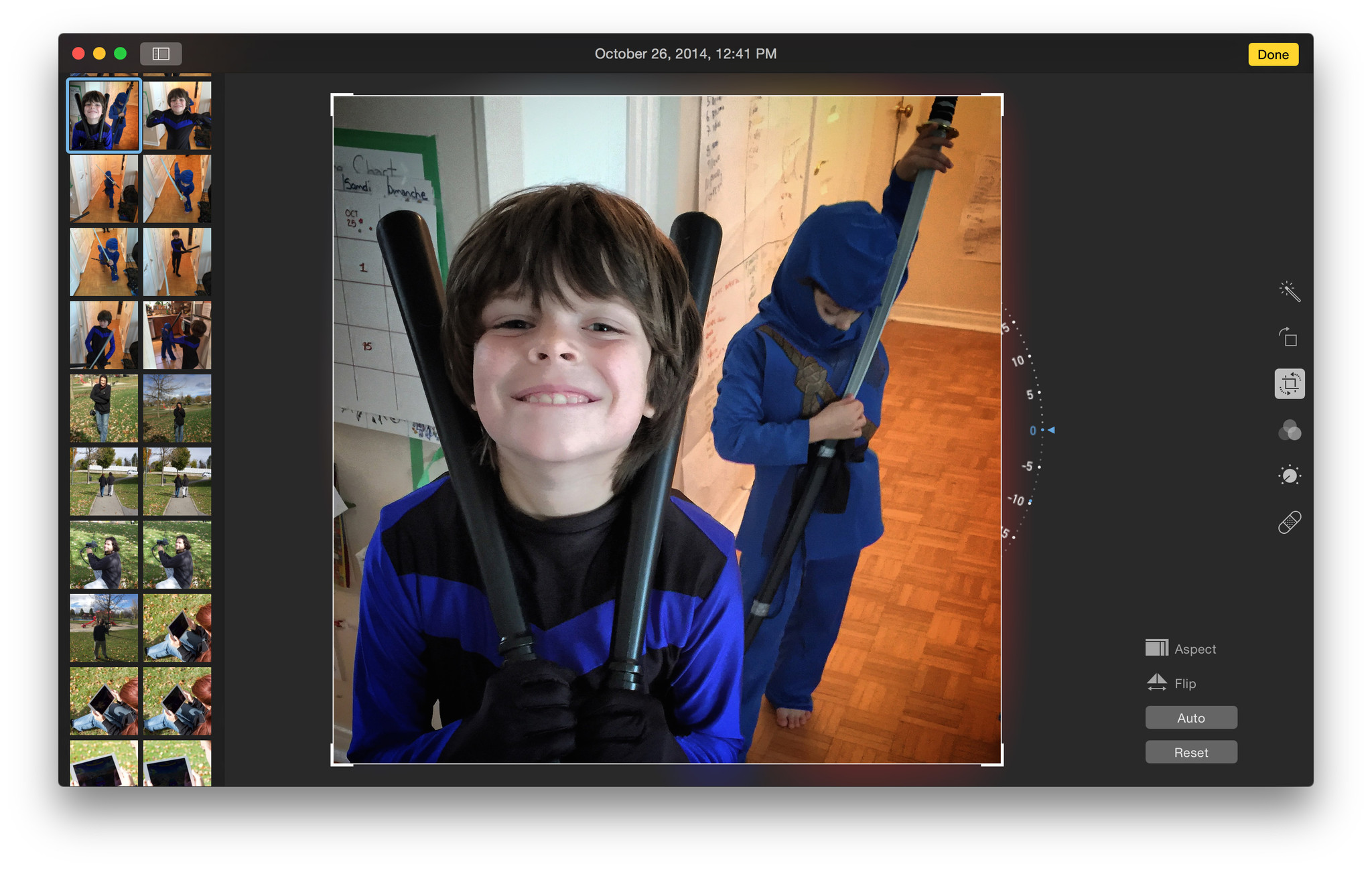
Best of all, everything is non-destructive. You can apply the magic wand, see what changes it makes to the sliders, adjust them, and then come back hours, days, or months later and adjust them again, revert certain ones, or revert right back to the original. And those changes sync, like the photos themselves, to iCloud and across all your devices.
Projects plus
In case you were worried Apple would abandon bookmaking and other print projects with the reinvention of the Photos app — don't be. Books, calendars, cards, and prints are all still here, and are all quicker and cleaner than ever.
They're also modernized. There are square books now for the Instagram age, and super-wide prints for all those panoramas. You can even hit auto and let Photos handle everything from squares to panos without you having to laborious set each and every one up individually.
I'm not going to throw out the "magical" word, but if I were, here'd be the place for it.
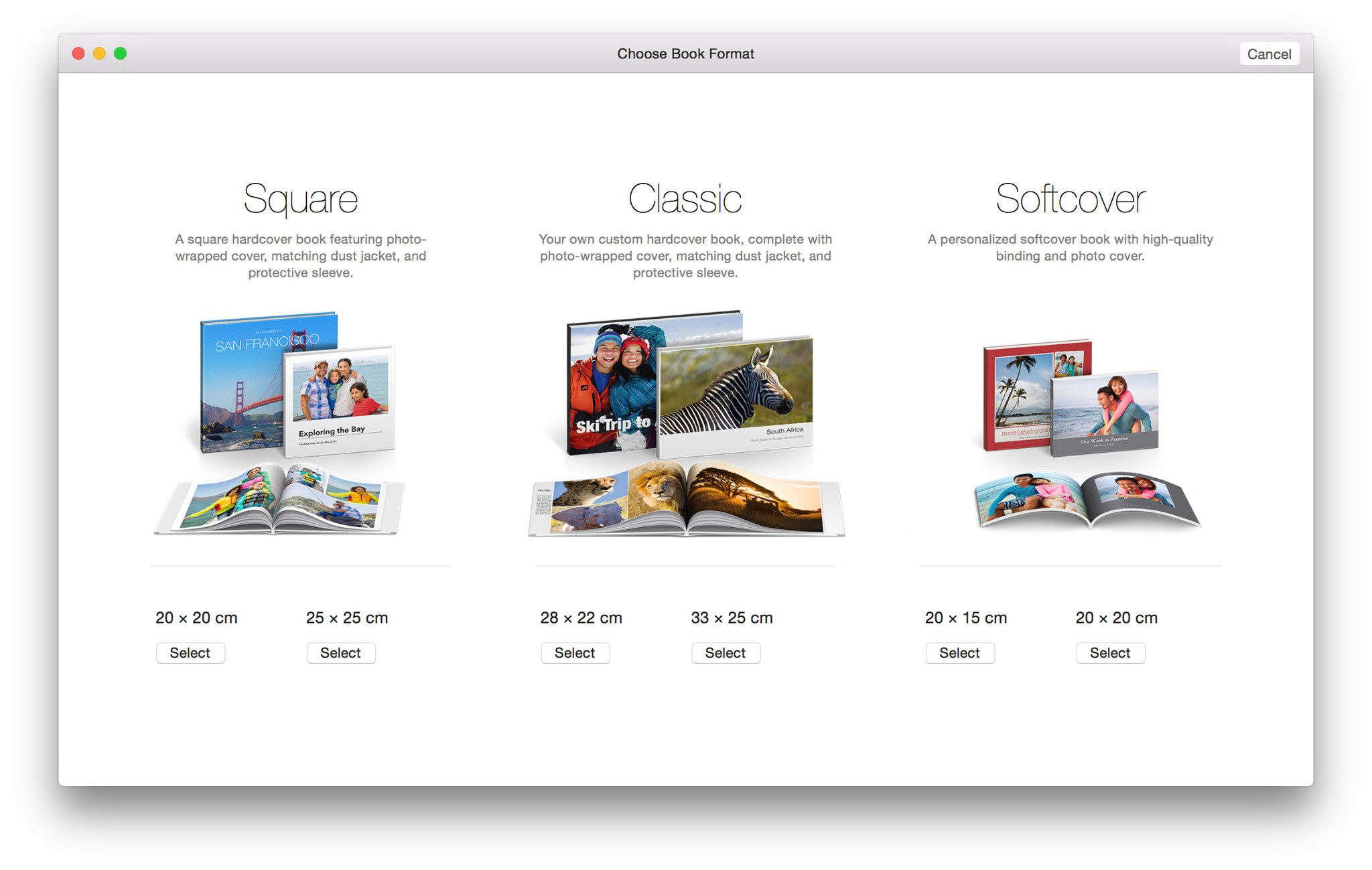
There's a bird's eye view for bookmaking, to help you get a better sense of overall context; downloadable themes so you can keep your projects looking fresh; and multiple recipient settings so everyone can enjoy the end results without you having to do a lot of extra work.
For those who prefer digital to physical, slideshows have also been improved, with new themes, new transitions, and full integration with the new collection views.
To the cloud
By itself, Photos for Mac is a solid entry to the mid-level photo/video management space. Connected to iCloud Photo Library, however, it becomes something more. iCloud Photo Library is still in beta, like Photos for Mac, but the architecture and implementation looks really smart and really solid: It takes all the photos and videos stored in your library and uploads them to Apple's servers so your past is not only safely backed up, but available to you on all your Apple devices and via iCloud.com. That's everything you've ever taken and loaded into iPhoto or Aperture going back to the very first photo.
iCloud Photo Library will then keep uploading all the new photos and videos you take going forward, so everything stays safe and in sync into the future. That includes not just the photos, but also the non-destructive edits and metadata like favoriting. Make a change on your Mac, and it's reflected on your iPhone at the speed of the internet. Make a change on your iPad, and the bits race back to your Mac.
If you're not a fan of "the cloud", you can also choose to live completely offline, and just store and manage your photos locally on your Mac. iCloud Photo Library is entirely optional.
If you do use iCloud Photo Library, you can choose to keep all your originals on your Mac, or to optimize storage and keep all your originals on iCloud and only the most frequently used on your Mac.
The promise of "nearline" or "nearly-online" is thus: The stuff that you access the most is kept locally, so that it's always immediately available; the stuff you access the least is stored on servers so that it's not clogging up your disk space. It blurs the lines between device and cloud, but in a way that gives you the best of both approaches. Lose your internet connection? No worries, the things that are most important to you are still there. Running out of storage? No worries, the things that are less important are kept on Apple's servers until you need them.
The only drawback is the size of that cloud storage. Everyone gets 5GB of iCloud for free when they create an Apple ID, but that 5GB goes fast — especially because it's not just used for photos, but for backups, files, and other data. You can buy additional storage, and it's much cheaper than it used to be, but it's still not as cheap as most competing services like Google Drive, Microsoft OneDrive, or Dropbox.
Current monthly pricing is 20GB for $0.99, 200GB for $3.99, 500 GB for $9.99, and 1TB for $19.99. I'm currently on the 500GB plan and, even with multiple device backups, I have room to spare.
If iCloud space is an issue for you, you can keep on using My Photo Stream, which stores and syncs 30 days or 1000 photos for "free" (it doesn't count against your iCloud storage). It's not going anywhere. But... it's not going anywhere.
iCloud Photo Library is a better model. It feels like the way things should work. Hopefully Apple runs the numbers and finds a way to make it even more accessible.
Back to the future
Apple is fearless when it comes to dropping the old in favor of the new. That applies not only to hardware, but to software as well. iMovie. Final Cut Pro. iWork. Each was rebooted, painfully for many, but in ways that not only made them better able to meet the needs of the future, but also to meet the needs of a far wider range of people. They went from power tools to empowering tools.
With Photos, Apple has done just that. They've scrapped the past, started over, and made something for the future. Something that is born of — and can grow with — the age of multiple connected devices. They've also done something more: They've learned from previous reboots, and are releasing Photos much further along the feature return curve.
There are a few things still missing, some that no longer make sense, some that may still return. But even in beta, especially when combined with Photos for iOS 8 and iCloud Photo Library, Photos for Mac feels not only mature but wise.
Even after only playing around with it for a day, and only in pre-release form, and only for this quick preview, for the first time, I feel like I don't have to be concerned about what to do with my photos. And that's an amazing feeling.

Rene Ritchie is one of the most respected Apple analysts in the business, reaching a combined audience of over 40 million readers a month. His YouTube channel, Vector, has over 90 thousand subscribers and 14 million views and his podcasts, including Debug, have been downloaded over 20 million times. He also regularly co-hosts MacBreak Weekly for the TWiT network and co-hosted CES Live! and Talk Mobile. Based in Montreal, Rene is a former director of product marketing, web developer, and graphic designer. He's authored several books and appeared on numerous television and radio segments to discuss Apple and the technology industry. When not working, he likes to cook, grapple, and spend time with his friends and family.
